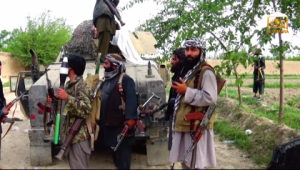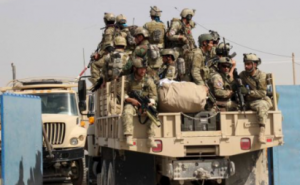In a bold and well-orchestrated offensive, the Taliban swept into the northern Afghan city of Kunduz. Many observers wondered if they were seeing a repeat of the ISIL offensives against Mosul last year and against Ramadi this year. Some wondered if the Afghan army (ANA), after years of hard fights and high losses, was on the verge of collapse.
Kunduz’s significance
The southern half of Afghanistan is chiefly Pashtun and the Taliban began and is strongest there. The northern half is home to Tajiks, Uzbeks, Hazaras, and Turkomans, who oppose the Taliban – and Pashtuns in general, for that matter.
Kunduz province, owing to settlement programs of nineteenth-century monarchs, has a sizable Pashtun population. The Taliban have taken advantage of this demographic quirk and expanded operations in Kunduz over the last few years, especially in this year’s fighting season.
The Taliban may have sought to draw ANA troops out of the south to ease operations there. They may also have wanted to position themselves to interdict supply columns coming in from the north and to establish control over Kunduz oil wealth.
Afghan failures
The Taliban were able to mass four sizable forces around Kunduz before launching a four-prong attack. This constitutes a serious intelligence failure. Security forces should have detected troop movements in their districts. Tribal elders should have as well. However, Taliban parleys with elders may have reduced the latter’s likelihood.
There were battlefield failures as well. Early reports indicate that local troops did not put up significant resistance and indeed showed their heels all too readily. Other reports say that they fought until their supply of ammunition ran low. The brevity of the engagement casts doubt on the latter claim. Fortunately, mobile reaction forces were available.
Taliban failures
After the city fell into their hands, the Taliban made efforts to reassure the public that they were in no danger from them. They went door-to-door to recruit young men to fight alongside them in the impending counterattack. Clearly, the Taliban wanted to hold Kunduz.
When the counterattack came, the Taliban were ousted – and rather quickly. The ANA sent in mobile special forces units, not regular infantry forces. The outcome indicates that ANA special forces are significantly superior to the Taliban forces in the north. Though the latter’s quality may vary, it is unlikely the Taliban deployed their lesser troops in the Kunduz operation.
American special forces acted as advisers but did not engage in combat. (They may be used as reaction forces in future battles, especially if regular ANA forces are stretched thin and begin to bend.)
Pashtun fighters have limitations that might have contributed to the loss of Kunduz. They are formidable guerrillas whose tenacity and knowledge of local terrain have been clear since the calamitous British campaign in the 1840s. However, they have historically been resistant to learning regular infantry tactics, preferring longstanding tribal ways. Accordingly, they are unlikely to fare well in holding ground against well-trained and motivated troops.
Outcome
The Taliban may try to retake Kunduz city in coming days, however as for now their effort wasn’t much more than a propaganda coup. Failure to hold Kunduz parallels similar failures to hold district capitals and small garrisons over the last few fighting seasons. The Taliban have not yet been able to demonstrate to fence-sitting tribes that they are inevitable victors and must be bowed to, as they did twenty years ago.
As this year’s fighting season nears a close, three questions come to mind. How much of the ANA has the combat effectiveness of the Kunduz garrison and how much has that of its special forces? How long can the Taliban put troops into the field without more significant results? And who can sustain high casualties in what has become a war of attrition?
©2015 Brian M Downing

